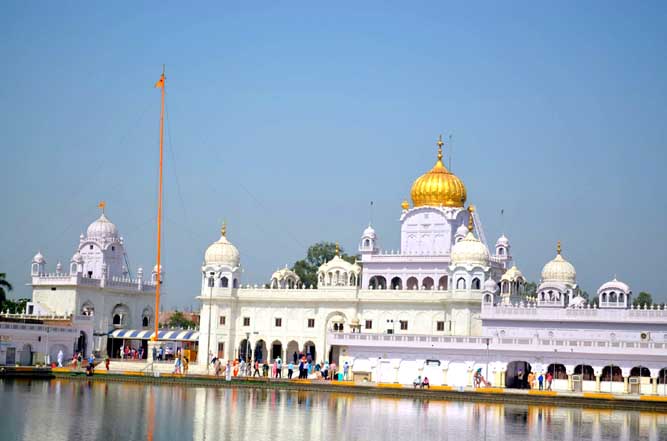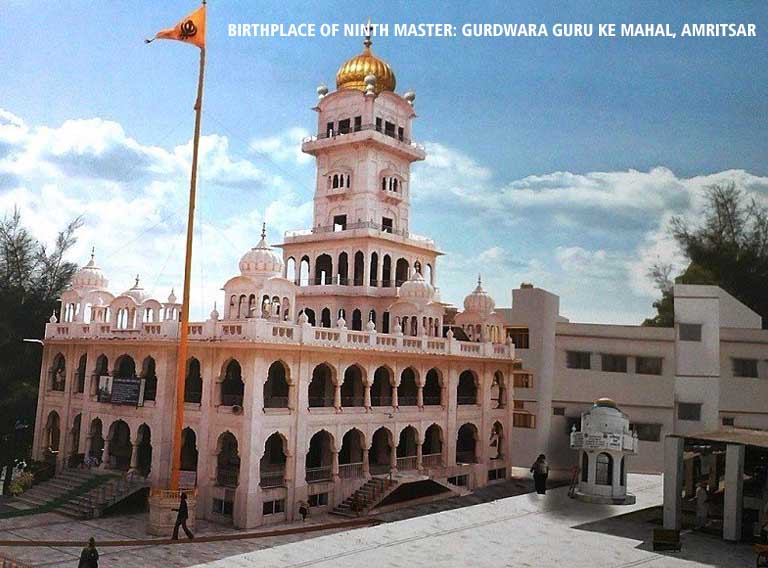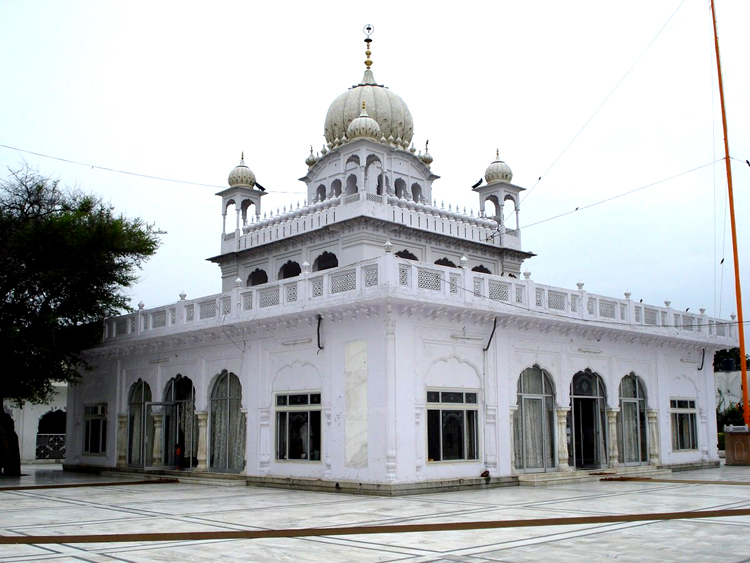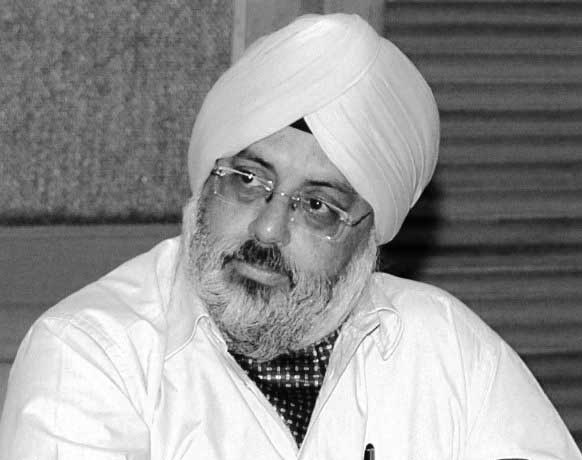Guru Tegh Bahadur -an Epitome of a Being
This is a tribute to the life, times and contribution of the Ninth Sovereign Guru Tegh Bahadur by none other than ace mentor and scholar Kamal Jit Singh Ahluwalia, who left us all four days ago fighting the COVID19 virus. This thought-provoking blog, containing vignettes of the Guru’s formative years, his years of solitude, the lessons taught, was sent to WSN to be published to coincide with the 400 Year celebrations of the Guru. Reading through the article, you can admire the author’s racy style and comprehend how he was a visionary gem who read, narrated and interpreted Sikh history from a management perspective, in a remarkably invigorating and innovative manner. In this article, the celebrated author relates the life of Guru Sahib with the qualities, competencies, characteristics, that an empowering leader needs to have. World Sikh News will continue to publish his exemplary work -published and unpublished, to make him part of the Sikh collective memory and honour his memory by doing so.
![This is a tribute to the life, times and contribution of the Ninth Sovereign Guru Tegh Bahadur by none other than ace mentor and scholar Kamal Jit Singh Ahluwalia, who left us all four days ago fighting the COVID19 virus. This thought-provoking blog, containing vignettes of the Guru’s formative years, his years of solitude, the lessons taught, was sent to WSN to be published to coincide with the 400 Year celebrations of the Guru. Reading through the article, you can […]](https://www.theworldsikhnews.com/wp-content/uploads/2021/04/Gurdwara-Baba-Bakala-ji-360x266.jpg)
HOW DID TYAG MAL BECOME TEGH BAHADUR? How and why did the Ninth Master spend 26 years in solitude? What kind of isolation it was and given the needs for self-quarantine in the present dangerous times, what can we learn from the Guru’s years in isolation in Baba Bakala, near Amritsar?
He who discards greed and desires
And gives up lust for wealth:
He who is free from joy and sorrow
And serves not evil passions
Know him verily to be god in flesh
Know such a man, says Nanak
To be living image of God
Who remains undisturbed by sorrow and happiness?
And is free from attachment, pride and avarice.
-Guru Granth Sahib, Page 220. Slok 13.
The Battle of Lohgarh
The Battle of Lohgarh happened at the time of the Ninth Master’s sister’s Veero’s wedding. The battle with troops, symbolised for him the battle of righteousness, truth, integrity –and what impressed him was of the sixth Master -maintaining tranquillity, poise, serenity, fearlessness, fortitude, self-control, calmness, the spirit of courage, in the most challenging situation. Not an iota of dejection, stress, confusion, dilemma existed in the sixth Master’s approach. He was crystal clear in his thought and impeccable in his actions. He had the tenacity, capacity to touch, move and inspire others.

Leadership norm -be responsive not reacting- work on the problem and not in the problem. Be like a lighthouse, lit internally while guiding others. Also need to look into the reality and don’t flinch.
Leadership lesson from The Battle of Lohgarh -be responsive not reacting- work on the problem and not in the problem. Be like a lighthouse, lit internally while guiding others. Also need to look into the reality and don’t flinch.
Death of Bhai Gurdas
The death of Bhai Gurdas made the Ninth Master Guru Tegh Bahadur aware that happiness and sorrow come like a light in one’s life and he felt all the strings of his life were turned in for a higher purpose and calling. Each storm, that comes like a whirlwind, bringing death to many, ended in peace, the sunshine of a golden dawn.
The world outside him, the world inside him, were moving as a visible panorama. Death lingered around him, chased his dearest kith, kin, his most revered teachers, guides, like night crushing the day. Yet the stream of truth flowered undisturbed, through the forest of errors, conflicts, strife, ranged around him. His mind was concentrated on the stream of truth, consequently, he was equipped to contemplate, reflect, ponder, examine over his future course with unparalleled vision. And he was merely 10 years old then.
Leadership norm: Be centred. Be clear. Be in the now. Be an astute observer; be eager to rewrite your agenda.
At 23 years Tyag Mal -sacrifice personified, as known before he became the Ninth Master was commissioned to lead a contingent of the army to fight the onslaught of a mammoth army of establishment troops, wherein he channelled all his energies, to a singular objective of winning with dignity, valour, thereby was christened as Tegh Bahadur -a courageous warrior.
 Tyag Mal
Tyag Mal
At 23 years Tyag Mal -sacrifice personified, as known before he became the Ninth Master was commissioned to lead a contingent of the army to fight the onslaught of a mammoth army of establishment troops, wherein he channelled all his energies, to a singular objective of winning with dignity, valour, thereby was christened as Tegh Bahadur -a courageous warrior. He ensured that all he had learnt over the time span was put to effective use.
Leadership lesson: it’s not the size of the dog that matters in a fight; it’s the size of the fight that matters in a dog. Join the dots for achieving integrated diversity.
The Ninth Sovereign
The Ninth Sovereign was directed to be in Bakala, such that he could live in elected solitude away from the storm, stress of political upheavals under the care of his maternal grandparents. He needed to be nurtured for a larger purpose, given the training to be in one with self -to be a man of clear wisdom who knows what, how, where and when he has to act. And his training of self-contemplation was to be ardours, time-consuming. To be a man of steel, necessitates a huge investment of time, energy, focus and dedication and in an environment that is conducive. You need to prepare the soldier first, by training him backstage, such that when he goes in the trenches, he is ready, equipped to fire, annihilate the enemy in the now.
He also needed to be aware that the then prevalent techniques of self-mortification, torturing one’s body, mind, cruel austerities to purchase birth and heaven, tasting divine tranquilities were basically all smoke and no fire, and were totally divorced from reality. He thus was clear that he need not chastise his body, embrace a life of misery, as the price of eternal happiness.
He did not despise life, show disdain for the decencies of civil society. He did not execute any monastic penance of the aesthetic who goes to the forest, desert saying ‘full of hindrances is the householders’ life’.
Guru Tegh Bahadur did not despise life, show disdain for the decencies of civil society. He did not execute any monastic penance of the aesthetic who goes to the forest, desert saying ‘full of hindrances is the householders’ life’.
He lived in the heart of the city with his family and was joined by his wife Mata Gujri who practised the same inward journey, like he prayed for the salvation of humanity and participated in all his silent life of devotion to God, while abiding in His will, totally and in totality.

An apt example of team interplay, comradeship, where both pursued a common objective. She exhibited with conviction that in the Sikh way of life, home ties are never snapped in pursuit of spiritual freedom. The ties of true love between the man and wife help them to transcend all bonds and develop a spirituality of mind, soul which inspires them to identify themselves with the well being of the entire universe. The concept of marriage was re-defined, from merely being biological companions to being that of intensely evolving, contributory, engaging humans.
 Baba Tegh Bahadur’s solitude was not a state of isolation that leaves man at the mercy of self-love and all its miseries. His life was not that of a walled anchorite of a romantic legend. His solitude and quiet meditative life depended not so much on physical isolation, as on the inner apartness, that bears witness, even in the busiest setting of social life to man‘s true communion with the divine spirit.
Baba Tegh Bahadur’s solitude was not a state of isolation that leaves man at the mercy of self-love and all its miseries. His life was not that of a walled anchorite of a romantic legend. His solitude and quiet meditative life depended not so much on physical isolation, as on the inner apartness, that bears witness, even in the busiest setting of social life to man‘s true communion with the divine spirit.
Through communion with the Perfect Being, Baba Tegh Bahadur, acquired a bond with humanity, which far more from being broken, tended always towards what is the model of true society; the brotherhood of man in the spirit of God. Thus his meditation was not only a perpetual communion with the Supreme Being, but through the realisation of His all-pervading spirit: it was a communion with all mankind.
Through communion with the Perfect Being, Baba Tegh Bahadur, acquired a bond with humanity, which far more from being broken, tended always towards what is the model of true society; the brotherhood of man in the spirit of God.
Mata Gujri Ji
He and his devoted wife Mata Gujri Ji prayed and meditated not only for themselves but for the whole of humanity. They also sought from God, the knowledge and inspiration for the task they were waiting to be assigned to them. They both prayed for strength and the power to fulfil it and both responded humbly, sincerely to each inner call.
Baba Tegh Bahadur was intimately in touch with the world outside him, consequently was deeply concerned with the fate and freedom of his country, hence watched with keen interest the social, political changes that were taking place, as an artist watches a drama, in which he is to play a hero’s part, later.
Elective Solitude of the Ninth Master
During these 26 plus years, the Ninth Master, lived in elective solitude amid busy surroundings, holding his head high, self-possessed, serene, self-control, he became a child – innocent, humble, in poise, living his life at the transcendent level of Reality, which mortals like you and me, who exists in a life of illusion, simply cannot conceive.
From human to Being:
Due to the sheer tenacity of his hard work, singular vision, he was aware -became a being now -from human -had powers with him. Yet he kept it under self-control and lived in the silence of innocence. His message being –desist posturing, playing to the gallery, being loud, striving to be the centre of attraction at every moment, seeking attention always.

He knew that he had it in him, yet he carried it with humility and poise of a sage. The more he discovered the secret resources of his own in-communicable personality, the more determined was his preparation to contribute to the redemption of humanity. Whenever he turned his glance inward, he opened the window of his inner silence to the world.
Following in the footsteps of her husband, Mata Gujri, rose from contemplation to contemplation, till she stood fully enlightened on the Mount of Vision, in her supreme realisation and burnt away all dross and alloy. Thus she entered the realm of Truth, perceiving the Love, in which all is one. She held within her heart the treasure of divine wisdom and the wondrous knowledge that is Light and peace.
The abundant life of Baba Tegh Bahadur
Baba Tegh Bahadur now lived at the transcendent level of Reality, which we, immersed in the poor life of illusion cannot conceive. He breathed in an atmosphere of abundant life, indicating humanity’s claim to the possible and permanent attainment of Reality. His life and achievement testified to the advent of triumphing spiritual power. The deepest, richest levels of his personality had now attained perfect light and freedom. He was imbued with divine Light and consumed with eternal Love.
Baba Tegh Bahadur’s life and achievement testified to the advent of triumphing spiritual power.
 At the midnight hour of March 30, 1664, suddenly a resplendent Light blazed within him, his face radiant with the splendorous beams of illumination. The call had come. He sought, from the Hidden and the Divine, strength to face the problems his agonising people faced and to bind the terrors of the time. God had crowned him with spiritual sovereignty of the world. He had become the un-proclaimed King of the Kingdom of spirit. In utter humility, he maintained a veil of silence over it.
At the midnight hour of March 30, 1664, suddenly a resplendent Light blazed within him, his face radiant with the splendorous beams of illumination. The call had come. He sought, from the Hidden and the Divine, strength to face the problems his agonising people faced and to bind the terrors of the time. God had crowned him with spiritual sovereignty of the world. He had become the un-proclaimed King of the Kingdom of spirit. In utter humility, he maintained a veil of silence over it.
Why does the sun proclaim the advent of its own light? It blazes, shines, announces his dawn to humanity, through its burning silence.
Guru Tegh Bahadur lived in the majestic silence of his inner illumination
Guru Tegh Bahadur lived in the majestic silence of his inner illumination. He had experienced the blending of the Light of Guru Har Rai and Guru Har Krishan with the light of his soul. He had felt the blessing of inner transformation into a new manifestation of the eternal spirit of Guru Nanak. He had intuitively received a call from in-dwelling God, to carry the torch of Guru Nanak, to the farthest corners. He was blessed, chosen to rewrite the history.

Mata Gujri knew, from the spiritual experiences she shared with her husband, that he had now received the Lord’s command to shoulder mammoth responsibilities of Guruship of Sikh faith. His mother Nanaki knew that the great day, which she was waiting excitedly for, is a stone’s throw away now. A great wish of a pious mother was going to be a reality soon. Yet Guru Tegh Bahadur remained undisturbed and unmoved by the noise and commotion of the revelation of the Guru at Bakala.
Ponder:
- He who had been blessed would not reveal himself.
- He refused to set up a propaganda booth in the open market of imposters.
- He refused to compete, challenged at the diverse claim of 22 rival pretenders.
- Why should a prophet of truth go to the vanity fair of preachers or falsehood?
- Why should the sun give up its majestic position of shining in the solitude of its sovereign splendour and choose to tinkle among the fading stars? Even the blind will be able to see His light.
- Neither the affectionate eateries of his mother, nor the devout persuasion of his brother-in-law, relatives, associates, moved Baba Tegh Bahadur to come out of his God-like silence of Nirvana, and declare himself as the successor of Guru Har Krishan.
The humility of Guru Tegh Bahadur
When the scions of Bhalla, Trehan families, descendants of Guru Amar Das, Guru Angad Dev, all other eminent Sikhs of Guru Har Krishan’s durbar like Bhai Daya Das, Mati Das, Sati Das, Bhai Mani Ram, and others bowed reverently in humble adoration to Guru Tegh Bahadur and sought his assent to inform the outside world about the final and irrevocable enthronement of Guru Tegh Bahadur on the prolific throne of Guru Nanak, they begged the Guru to give an open audience to the seekers of truth thus preventing any further exploitation by those 22 imposter gurus.
 Guru Tegh Bahadur then delivered what may be termed as his first sermon to his chosen disciples and leading apostles. In utter humility, he said, “The moral and spiritual responsibilities attached to Guru Nanak’s Gaddi -throne -are actually too heavy to be shouldered by a humble servant of God like me.”
Guru Tegh Bahadur then delivered what may be termed as his first sermon to his chosen disciples and leading apostles. In utter humility, he said, “The moral and spiritual responsibilities attached to Guru Nanak’s Gaddi -throne -are actually too heavy to be shouldered by a humble servant of God like me.”
But the call of Almighty God has come as his inexorable will, which cannot be disobeyed. I have given my word to serve in this capacity to my God and to the eternal spirit of Guru Nanak who have assured of their grace and love. I cannot refuse your request as you represent the Sangat. Now that you have acknowledged me as your Guru, promise me, that you will obey my first command, which forbids you, setting up any camp, in the vanity fair outside, on my behalf, and not to declare, announce, me as the Ninth Guru, to the Sangat -that is judging Gurus by material values, and by the amount of wealth they are able to display.
Remember, the Sikh Gurus never sought such cheap popularity, and never adopted ignoble methods to assert their wisdom and light as are adopted by pretenders -then and now. You all will maintain a dignified silence and will not drag me into competition with them. Do not fear that if we live in silence and faith, the torch of Guru Nanak’s ideals may be wrested by some imposters. That light is eternal, is the indwelling of divinity, which cannot be acquired the way it’s being sought by Dhir Mal and others.
Remember, the Sikh Gurus never sought such cheap popularity, and never adopted ignoble methods to assert their wisdom and light as are adopted by pretenders -then and now.
Like in the present times, Imposter gurus in the past too have tried to wrest guruship from true Gurus and have failed. They will go on trying in future, yet shall fail. How long can falsehood pretend to be the bearers of the light, which they have not? How long can false mysticism delude the seekers of truth?
- When Guru Angad hid for many months to keep away from the din and noise of the pretenders, did he cease to be the Guru?
- When Dasu and Datu kicked, pushed Guru Amar Das into elected silence, solitude, did the light of Guru Nanak cease to shine in him, or was anyone able to deprive him of the spiritual authority given him by Guru Angad?
- How long could the pretenders misguide people? It’s the law of life that Truth and Light wait patiently to be revealed to the world, through the silence of the seekers’ agony.
- It is the law of life that Truth and Light wait patiently, to be revealed to the world, through the silence of the seeker’s agony.
Everyone was silent. A light of understanding was shining on the faces of all the apostles. And now there arrives in Bakla, a rich trader with a large convoy of tents, goods, well guarded by a number of armed men. His tents were pitched on the outskirts of the town, with splendours, attracting flocks of people. Commoners were intrigued to see this man, whose personality, entourage, splendour surpassed that of all the pretenders to the throne of Guru Nanak. People wondered whether he was the new guru, who arrived a bit late, or was he a Masand– bishop, who had come with offerings, disciples of his diocese, or was he a princely trader carrying provision for the Lahore court.
Soon it was revealed that the newcomer was a Labana trader of the flourishing Vanjara tribe named Makhan Shah. He appeared to be a tribal chief and looked like an aristocrat from his princely robes and dress. Through land, sea coast, but mainly from river routes, his convoy of ships provided provisions to the Mogul army, wherever it moved for imperialistic exploits.
 Kamal Jit Singh Ahluwalia, popularly known as KS Ahluwalia described himself as a student of Sikhism, endeavouring to uncover, understand better the Sikh ethos. For the past two decades and more, he had been sharing insightful thoughts in print, personal interactions, workshops and talk shows on Sikhi management principles from the House of Nanak and life-transforming leadership skills. He was a regular contributor to eminent journals and he impacted the lives of thousands of youth with over 5.6 million man-hours across diversified audiences at more than a hundred plus global locations. His columns have been regularly published in The World Sikh News.
Kamal Jit Singh Ahluwalia, popularly known as KS Ahluwalia described himself as a student of Sikhism, endeavouring to uncover, understand better the Sikh ethos. For the past two decades and more, he had been sharing insightful thoughts in print, personal interactions, workshops and talk shows on Sikhi management principles from the House of Nanak and life-transforming leadership skills. He was a regular contributor to eminent journals and he impacted the lives of thousands of youth with over 5.6 million man-hours across diversified audiences at more than a hundred plus global locations. His columns have been regularly published in The World Sikh News.

One thought on “Guru Tegh Bahadur -an Epitome of a Being”